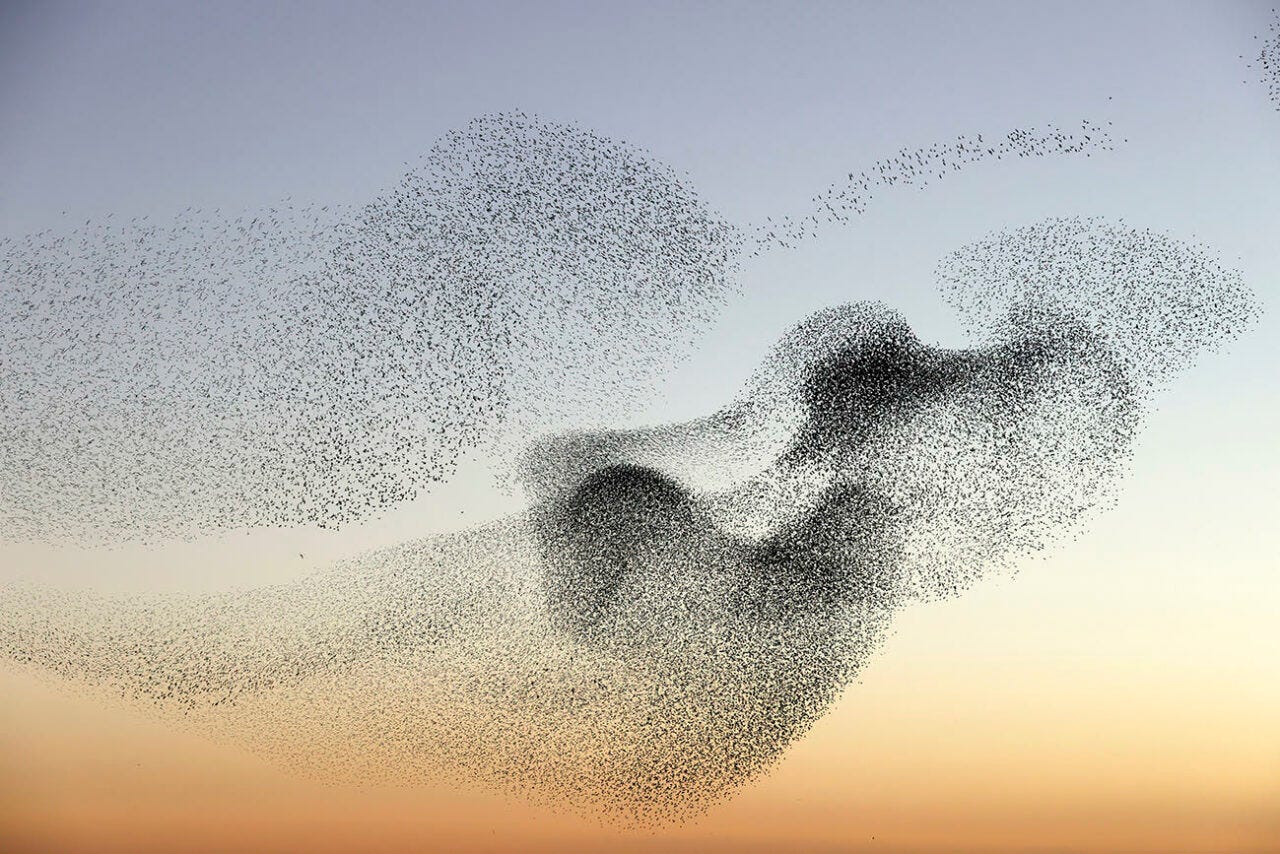Simulating Starlings with Algorithms (What Does The Modeling Mean?)
Written by Azzy Xiang
Mysteries of Murmurations
Just look up starling murmurations! They’re where hundreds of thousands of birds move as a single, undulating entity across the sky. How could so many individual birds achieve such perfect synchronization without collisions? The answer lies in emergent behavior, defined as complex patterns arising from simple individual interactions. Modern computing has allowed researchers to decode these biological mysteries by creating algorithmic models that simulate starling flocking behavior.
What is the Boids Algorithm?
In 1986, computer scientist Craig Reynolds created the groundbreaking "Boids" model, demonstrating how three simple rules could generate lifelike flocking behavior. Each simulated "boid,” or bird-like object, followed basic principles. These included separation by avoiding crowding neighbors, alignment by steering toward average heading, and cohesion by moving toward average position.
Surprisingly, these minimal rules produced creepily realistic flocking patterns. Modern iterations now incorporate additional biological factors like predator avoidance, energy conservation, and environmental obstacles, bringing simulations even closer to observed starling behavior.
What Algorithms Reveal About Birds’ Intelligence
The success of these simulations challenges traditional ideas of bird intelligence. The saying “bird-brained” probably won’t mean an insult anymore, because rather than requiring complex cognition or leadership from only one bird while the rest are “stupid”, murmurations emerge from decentralized decision-making.
Each starling reacts only to its nearest neighbors (typically 6-7 birds), creating a rapid information cascade through the flock. Advanced models show how this local interaction becomes global coordination, explaining how starlings achieve reaction times faster than human neural processing, under 100 milliseconds! The models also show why murmurations appear to flow like liquids and exhibit fluid dynamics.
Applications in Tech and Society
Engineers use modified Boid rules to program drone swarms for search-and-rescue operations. Traffic planners apply flocking principles to model pedestrian flows in crowded spaces.
Even the film industry employs these algorithms to create realistic crowd animations. And perhaps most importantly, these models help us understand other complex systems like neuron firing patterns and stock market fluctuations!
Current research pushes these models further by incorporating machine learning. Some systems now train on real starling flight data captured by 3D cameras, letting algorithms "learn" slight variations in flocking behavior.
Others explore how individual personality differences, like bold and cautious birds, affect group dynamics. Slowly, we’re coming closer to creating a perfect digital murmuration that might finally answer why starlings flock with these specific rules in the first place. While hypotheses range from predator confusion to social bonding, models continue to display the beauty of physics in life.
Sources:
Animating murmurations of starlings
Starlings Table - Joris Laarman
Boids Algorithm: Navigating the Skies of Collective Intelligence | by Data Overload | Medium
Written by Azzy Xiang from MEDILOQUY


